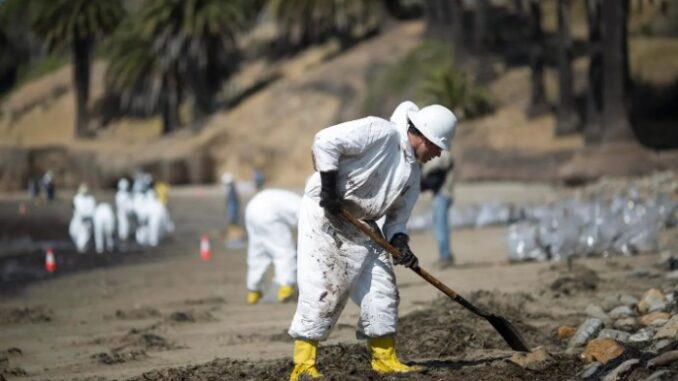
In a surprising twist that blends celebrity influence with hard science, golf legend Phil Mickelson is championing the restart of oil drilling off the Santa Barbara coast, arguing it could lead to cleaner beaches and a stronger California economy. Drawing from decades of scientific research, Mickelson’s stance highlights how extracting oil from underwater reservoirs might actually reduce natural oil seeps that have plagued the region’s shores for generations.
Mickelson, ranked #10 on Forbes’ 2025 list of the World’s Highest Paid Golfers with $40 million in earnings, has taken to social media platform X to voice his support for Sable Offshore, the company poised to revive operations at the Santa Ynez Unit oilfield. “It’s about energy security, lower costs, jobs, cleaner beaches and a healthier California,” Mickelson posted.
He further explained his involvement: “The reason I became involved with Sable Offshore is simple. The data shows it’s a true win-win for California—especially our environment.”
According to Mickelson, scientific studies demonstrate that pumping oil from these reservoirs will result in “reduced natural oil seepage through the ocean floor,” potentially eliminating the sticky tarballs that wash up on beaches and stain feet.

The science backing this claim is rooted in extensive research on the Santa Barbara Channel’s natural oil seeps. Studies dating back decades, including those by researchers like Quigley, Luyendyk, Hornafius, and Peltonen, show that active oil production correlates with decreased seepage from the ocean floor.
For instance, a study on hydrocarbon seepage near Coal Oil Point, California, found that offshore oil production directly reduces natural marine leaks.
These seeps, which occur independently of human activity, deposit oily residues on beaches year-round, creating environmental hazards that drilling could mitigate by lowering reservoir pressure.
The Santa Ynez Unit, discovered in 1968 and spanning 76,000 acres in federal waters, holds an estimated half-billion barrels of recoverable oil.
Operations halted a decade ago following a 2015 pipeline rupture that spilled about 2,500 barrels of crude, fouling thousands of acres of beaches and fisheries.
The incident, attributed to corrosion in a pipeline owned by Plains All-American, led to $300 million in penalties and a shutdown.
Now, Sable Offshore, led by industry veteran Jim Flores, acquired the field from ExxonMobil in a $1 billion deal and has invested in repairs, including new safety valves.
The company briefly restarted production from one platform in May 2025 and aims for full output exceeding 50,000 barrels per day.
Proponents argue that resuming drilling isn’t just about energy—it’s about environmental stewardship. By reducing natural seeps, the project could deliver cleaner beaches while boosting California’s energy security and creating jobs.
Analysts project Sable could generate $700 million in annual EBITDA if successful, with the field operating under federal jurisdiction potentially benefiting from supportive policies under the Trump administration.
To address pipeline concerns, Sable is exploring a floating production, storage, and offloading (FPSO) system, which would store oil at sea and transport it via barges, bypassing onshore infrastructure and minimizing spill risks.
However, the push faces fierce opposition. Environmental groups, celebrities like Julia Louis-Dreyfus and Jane Fonda, and California regulators have rallied against it.
Louis-Dreyfus called the project “a rat” at a March 2025 protest.
The Santa Barbara District Attorney filed felony charges in September 2025 over alleged violations during repairs, and the California Coastal Commission issued fines and cease-and-desist orders.
Governor Gavin Newsom’s recent legislation requires upgrades to “best available technology,” adding hurdles unless operations resume by January 2026.
Despite the controversy, Mickelson and supporters emphasize the data-driven benefits. As California grapples with energy needs and environmental goals, this debate underscores a counterintuitive truth: sometimes, more drilling could mean less pollution.
For the energy sector, Sable’s success could signal a revival of offshore production, balancing economic gains with science-backed environmental improvements. California would be way ahead by drilling locally and not buying from Iraq, Ecuador, China, and other countries.
Tax Burden in 2025?
Crude Oil, LNG, Jet Fuel price quote
ENB Top News
ENB
Energy Dashboard
ENB Podcast
ENB Substack






Be the first to comment